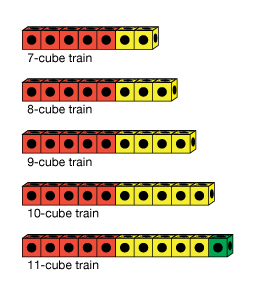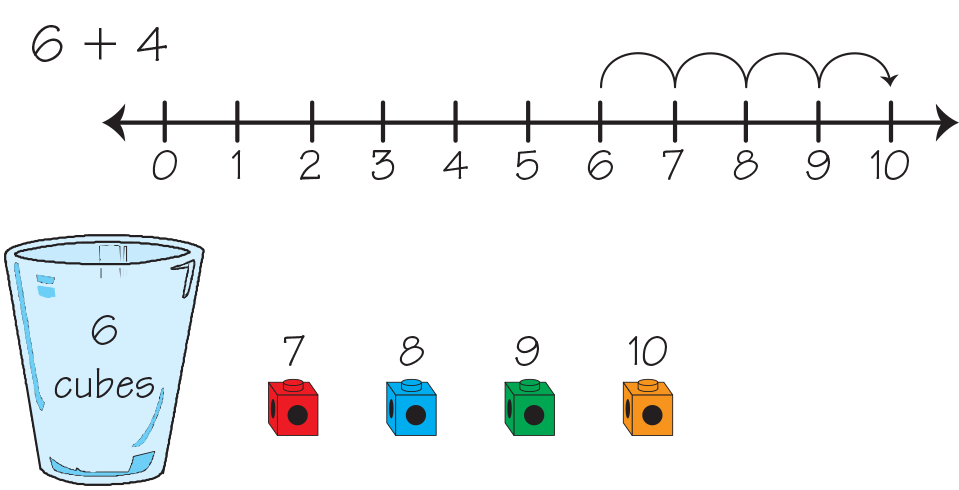|
|
Daily Practice and Problems |
Lesson |
Homework |
Assessment |
Student Books |
Student Activity Book |
|
|
|
|
Teacher Resources |
Teacher Guide - digital |
|
|
|
|
Supplies for Students
desk number line (0–40)
train of connecting cubes. See
Materials Preparation.
20 connecting cubes
Materials for the Teacher
Display of Writing Numbers for Number Lines
(Student Activity Book) Page 5–6
Display of Math Hoppers (Student Activity
Book) Pages 7–8
Unit 1 Assessment Record
class number line (0–130)
meterstick or pointer
Materials Preparation
Prepare Number Lines. Tape a
desk number line (0–40) on each student's desk. Post the class
number line (0–130) in the room where all students can see it.
Consider hanging the number line at board-ledge level. This
number line will be used throughout the year. Students should
be able to reach it (with a pointer if necessary) so they can
use the number line when they explain their reasoning to the
class. Allow some room to the left of zero at the beginning of
the number line.
Prepare Trains of Connecting
Cubes. Prepare as many trains of connecting cubes as the
number of students in the class. For example, for a class of
25 students, build trains with 1–25 cubes. Alternate colors in
groups of five so that students can easily use the counting-on
strategy to find the number of cubes in their trains. For
example, the trains with five or fewer cubes will be made of
all red cubes. The sixth train will be made of five red cubes
and one yellow cube. The seventh train will be made of five
red cubes and two yellow cubes. The tenth train will be made
of five red cubes and five yellow cubes. The eleventh train
will be made of five red cubes, five yellow cubes, and one
green cube. If the trains become too large to stay together,
break them into groups of ten and remainders. See Figure 1.

Figure 1: Alternating colors of cubes in groups of 5 to facilitate counting on



















